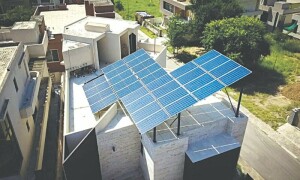TAXILA: The department of archaeology and museums of Khyber Pakhtunkhwa (KPK) has initiated the final phase for the restoration of the ancient Buddhist stupa and monastery, locally called Jinna Wali Dheri, dating back to the third and the fifth century AD.
The archaeologists, accompanied by PhD scholars from various universities, have begun the excavation to preserve the site and to provide on-the-field training and research facilities at this ancient stupa and monastery, located about 13 kilometres north of the Taxila museum, on the left bank of river Haro.
The most remarkable discovery from the site were the Buddhist mural paintings. This is the site where a hand-made painting on stucco plaster was recovered for the first time in Pakistan’s history.
Dr Naseem Khan, director of the department of archaeology, explained that the excavation of this monastery, spread across 180 square metres, started between the years 2002-2004. Later, this site was excavated and preserved between the years 2007-2010, during which the site was preserved, with a $31000 grant from the US government under the Ambassador’s Fund for Cultural Preservation (AFCP).
He said that, however, an area of 90 square metres was left unexcavated. Once the site came under the administrative control of the KPK government, after the 18th amendment, the department decided to excavate the store room and the assembly hall of the site and fully preserve the stupa and the monastery.
In-charge of the excavation team, Maseehullah Khan Bacha, while talking to Dawn said that although the previous two excavations led to the discovery of a fair quantity of antiquities, like coins of the Kushan dynasty and the White Huns; glass and shell bangles; stones and terracotta beads; earthenware storage jars, bowls and small pots; metal objects including weapons; stucco heads of Buddha and Bodhisattva; along with the remarkable discovery of the Buddhist mural painting, he was confident to discover more antiquities.
He added that the main purpose of the excavation was to completely expose the historical site and preserve it.
He also said that a number of students of the archaeology and anthropology departments of different universities are expected to join hands with the scholars to learn the process of excavation and preservation.
He said that one of the aims of the project is to protect the site from human and climatic agents. The site cannot afford further destruction, as it has already been robbed by treasure hunters.
He was optimistic that this site would play an important role for the archaeological treasury of the country, and promote tourism.














































